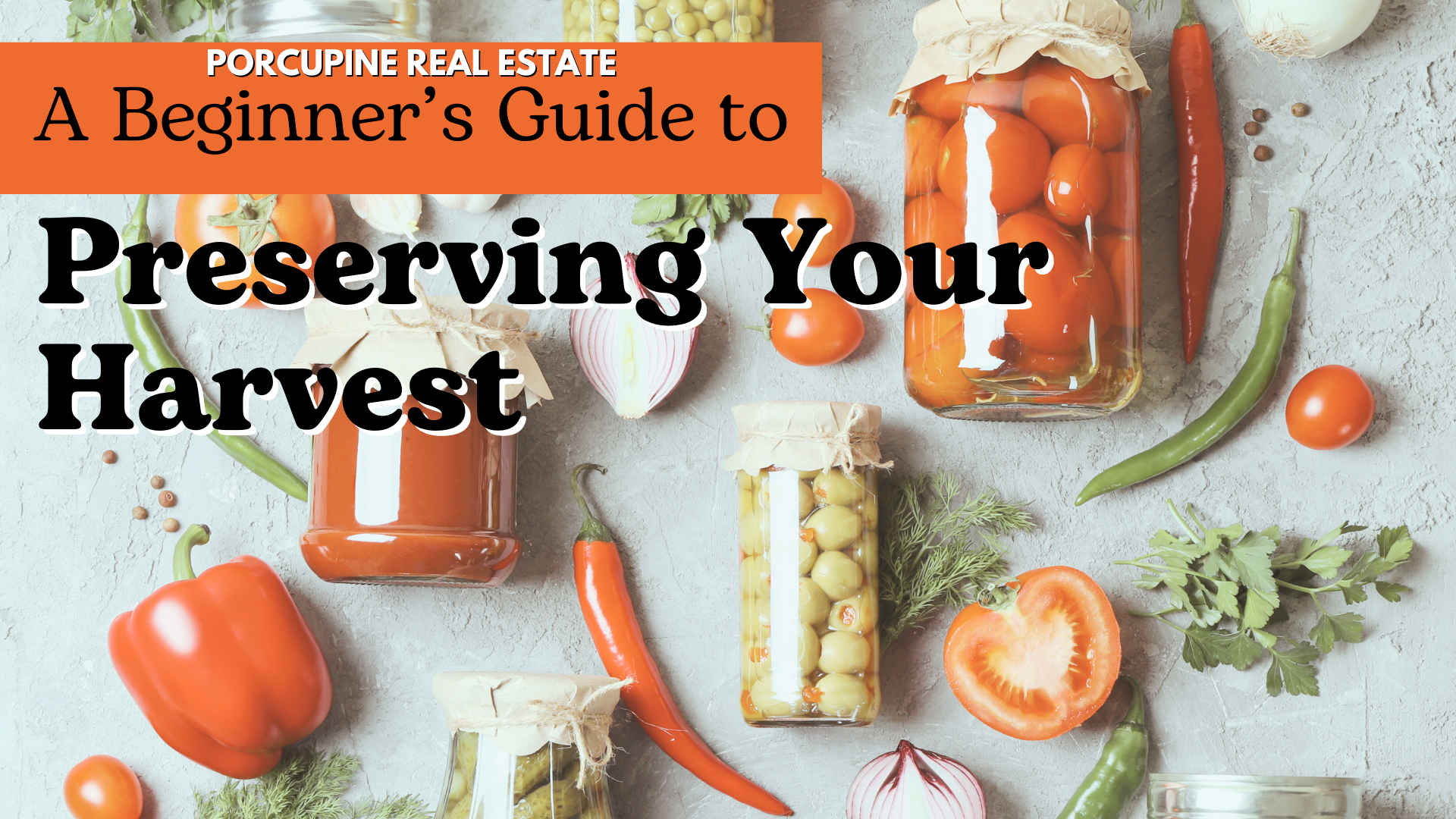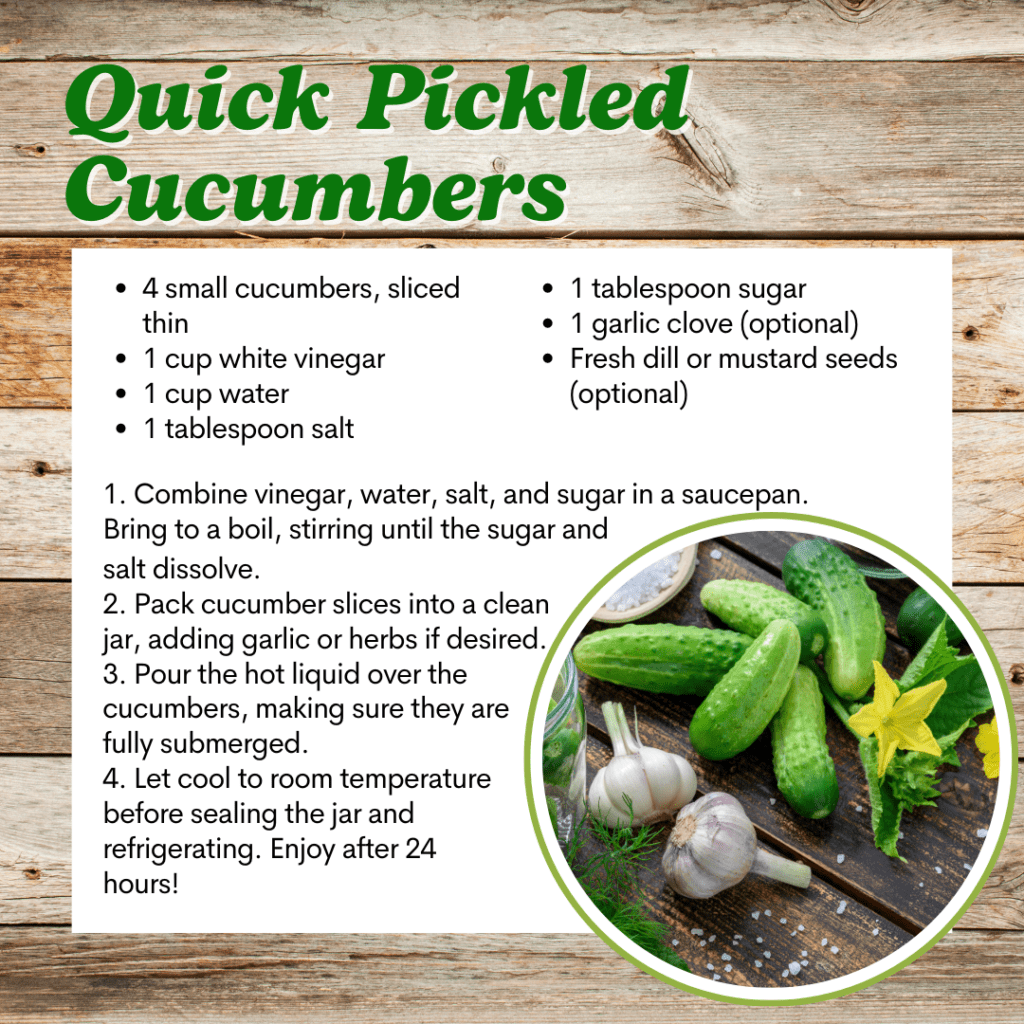Porcupine Real Estate Blog
A Beginner’s Guide to Preserving Your Harvest

Preserving your harvest is a great way to make the most of your garden’s bounty and enjoy homegrown produce all year long. Whether you’re new to homesteading or just starting to explore preservation, there are many methods available—some simple, others a bit more involved. Regardless of the route you choose, there's nothing like using last season’s fruits and veggies in a hearty meal during the cold New England winter. Here's a beginner’s guide to get you started:
1. Freezing
Freezing is one of the easiest and fastest ways to preserve food. It’s great for beginners because it requires little prep work and stores well for months. For even better results, consider vacuum sealing your produce to protect it from freezer burn and extend its shelf life. Whether it’s chopped vegetables or blanched fruits, freezing locks in nutrients, color, and texture.
2. Canning
Canning is a more traditional method that offers long-term storage with minimal electricity usage. Whether you're making salsas, sauces, or soups, canning preserves food for years. While it requires an initial investment in jars and a canner, it's a cost-effective way to store large amounts of produce. Many crops—like tomatoes, beans, and apples—can be canned without breaking the bank. Be sure you follow proven recipes when you preserve your harvest this way. Canning can be dangerous if you decide to just wing it.
3. Dehydrating
Dehydrating is a quick, simple, and low-cost way to store food. With a dehydrator or even your oven, you can dry fruits, vegetables, and herbs, reducing their moisture content and preventing spoilage. Dehydrated foods have a long shelf life and are perfect for snacks, soups, or teas. The equipment is affordable, and the process itself is straightforward.
4. Fermenting
Fermenting is an age-old preservation method that’s low-cost, safe, and easy to do. By allowing beneficial bacteria to break down the sugars in foods, you create nutrient-rich, probiotic-packed ferments like sauerkraut or kimchi. All you need is a jar, salt, and some patience. The result is a delicious, tangy addition to any meal.
5. Pickling
Pickling is another beginner-friendly method, especially if you enjoy tangy, flavorful foods. It’s a quick process that involves soaking vegetables in a vinegar-based brine. You can pickle cucumbers, carrots, beets, and more. Plus, pickled foods offer a refreshing crunch and can be stored in the fridge for months, or processed for longer shelf life.
6. Preserving with Sugar (Jams, Jellies, Preserves)
If you have a sweet tooth, preserving with sugar is a delicious option. Turning fruits into jams, jellies, or preserves is simple and helps retain the fruit’s flavor, color, and texture. You can easily make a batch of strawberry jam or apple jelly to enjoy throughout the year. Plus, homemade jams make great gifts!
7. Freeze Drying
For those looking to preserve food with maximum flavor and nutrient retention, freeze drying is an excellent option. It’s fast and relatively simple, but the equipment can be costly to start. Freeze-dried foods last for years, making them a great long-term investment, especially if you want to store larger quantities of food.
A Simple Pickling Recipe
Here’s a quick pickling recipe to get you started:
Quick Pickled Cucumbers
- 4 small cucumbers, sliced thin
- 1 cup white vinegar
- 1 cup water
- 1 tablespoon salt
- 1 tablespoon sugar
- 1 garlic clove (optional)
- Fresh dill or mustard seeds (optional)
- Combine vinegar, water, salt, and sugar in a saucepan. Bring to a boil, stirring until the sugar and salt dissolve.
- Pack cucumber slices into a clean jar, adding garlic or herbs if desired.
- Pour the hot liquid over the cucumbers, making sure they are fully submerged.
- Let cool to room temperature before sealing the jar and refrigerating. Enjoy after 24 hours!
Preserving your harvest can be as simple or as advanced as you want to make it. Whether you're freezing, canning, or fermenting, each method offers a rewarding way to savor the fruits of your labor long after the growing season ends. Happy preserving!


